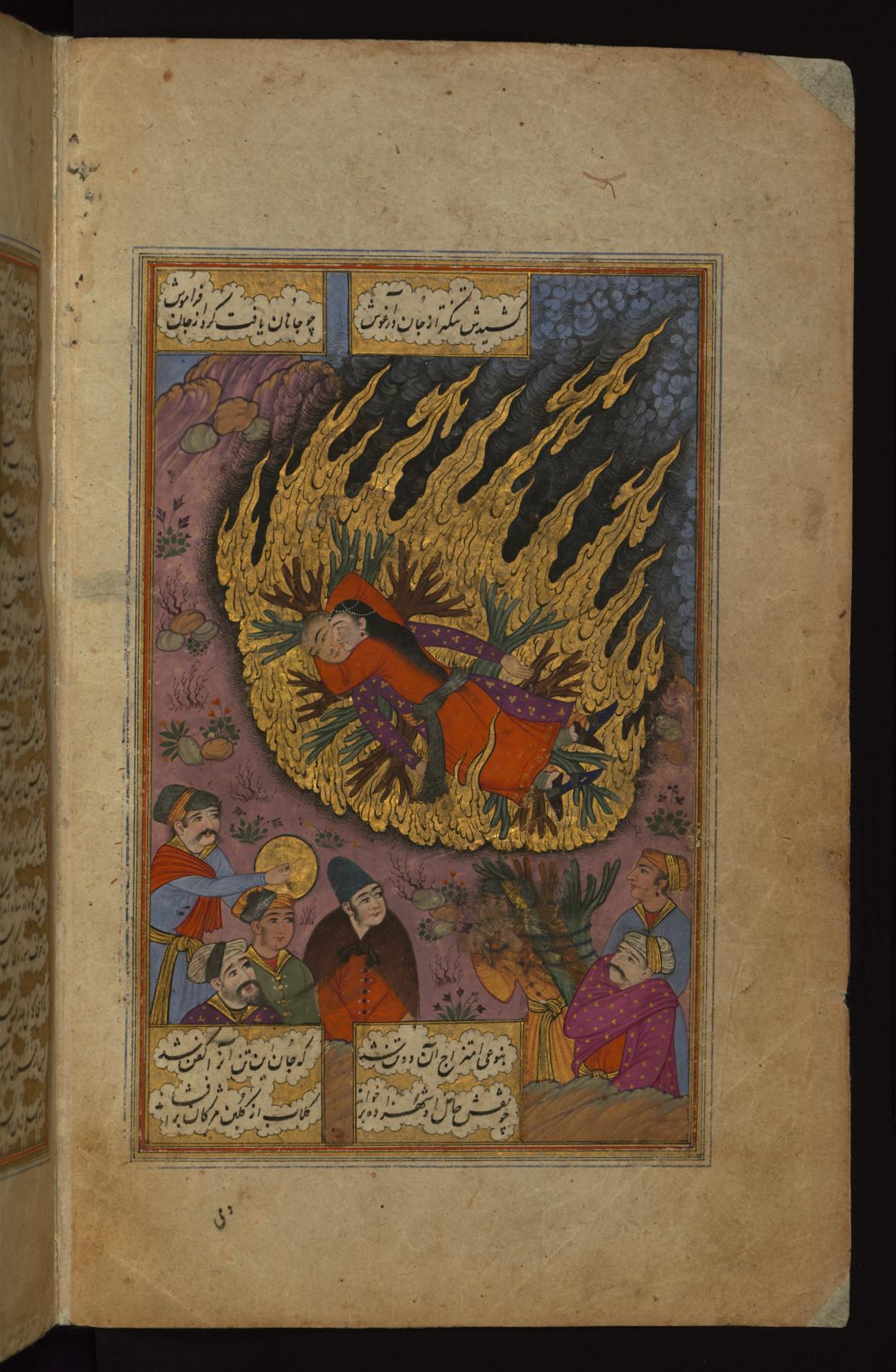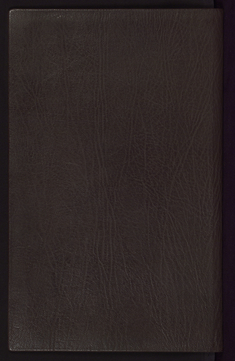Leaf from Burning and Melting: Hindu Couple United on the Funeral Pyre
This is an illuminated and illustrated copy of the poem Sūz va gudāz (Burning and melting) by Nawʿī Khabūshānī (d. 1019 AH / 1610 CE), which recounts the love story of a Hindu girl who burns herself on the funeral pyre of her betrothed. The codex was written in nastaʿlīq in black ink by Ibn Sayyid Murād al-Ḥusaynī and illustrated by Muḥammad ʿAlī Mashhadī in 1068 AH / 1657 CE. According to the colophon, Ibn Sayyid Murād al-Ḥusaynī copied the manuscript for the painter Muḥammad ʿAlī, the “Mani of the time,” as a “souvenir.” The fact that the manuscript was produced for one of the most prolific artists of seventeenth-century Iran makes it a highly significant document. It opens with an illuminated incipit with headpiece (fol. 1b) and closes with an illuminated tailpiece with colophon (fol. 21b). Text pages have interlinear illumination and small rectangular and triangular pieces with polychrome floral and scrolling vine motifs. There are eight miniatures in a style associated with the Safavid centers of artistic production of Mashhad and Isfahan (fols. 5a, 9a, 10b, 13a, 14a, 16a, 17b, and 19b).
Provenance
Provenance (from the French provenir, 'to come from/forth') is the chronology of the ownership, custody, or location of a historical object. Learn more about provenance at the Walters.
Henry Walters, Baltimore; by bequest to Walters Art Museum, 1931.
Geographies
Iran (Place of Origin)
Measurements
H: 9 1/4 x W: 5 11/16 in. (23.5 x 14.5 cm)
Credit Line
Acquired by Henry Walters
Location in Museum
Not on view
Accession Number
In libraries, galleries, museums, and archives, an accession number is a unique identifier assigned to each object in the collection.
In libraries, galleries, museums, and archives, an accession number is a unique identifier assigned to each object in the collection.
W.649.19B



